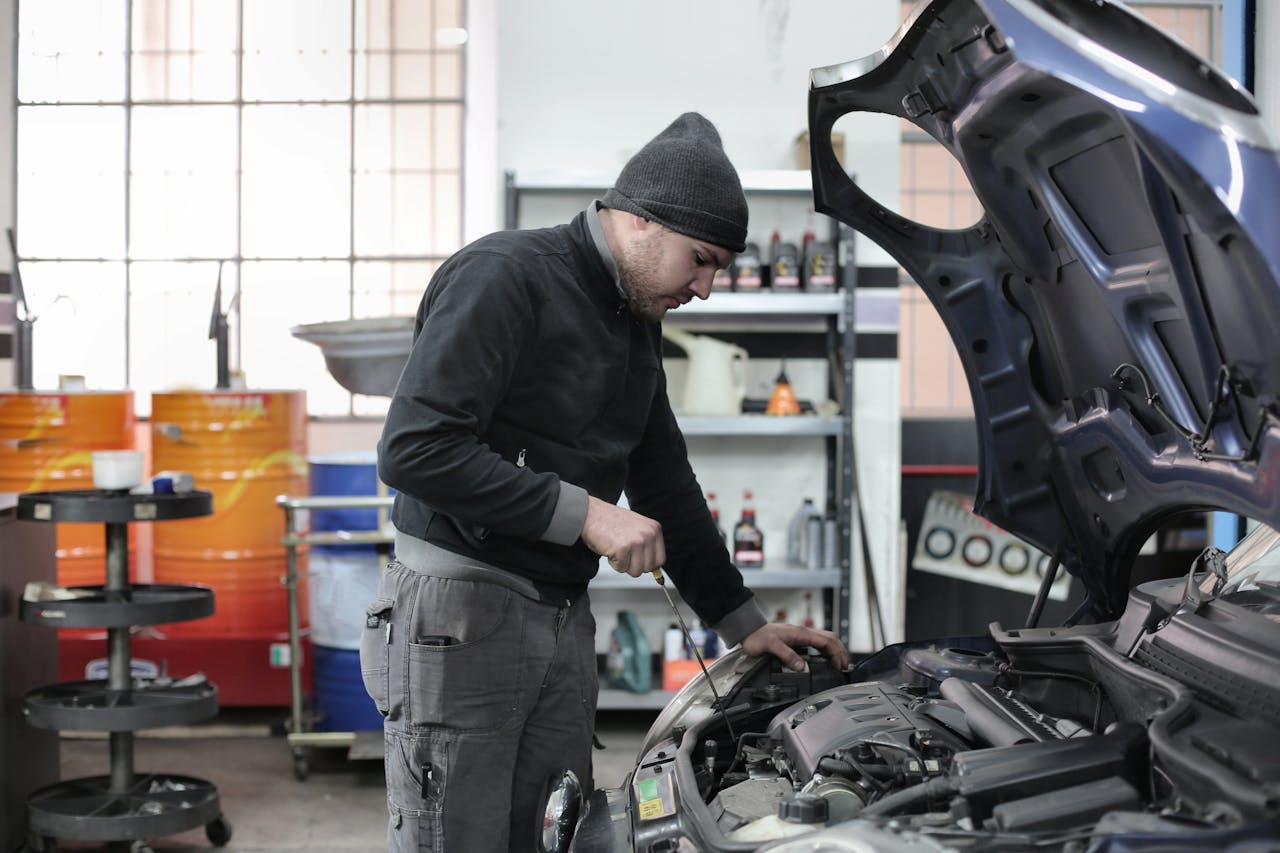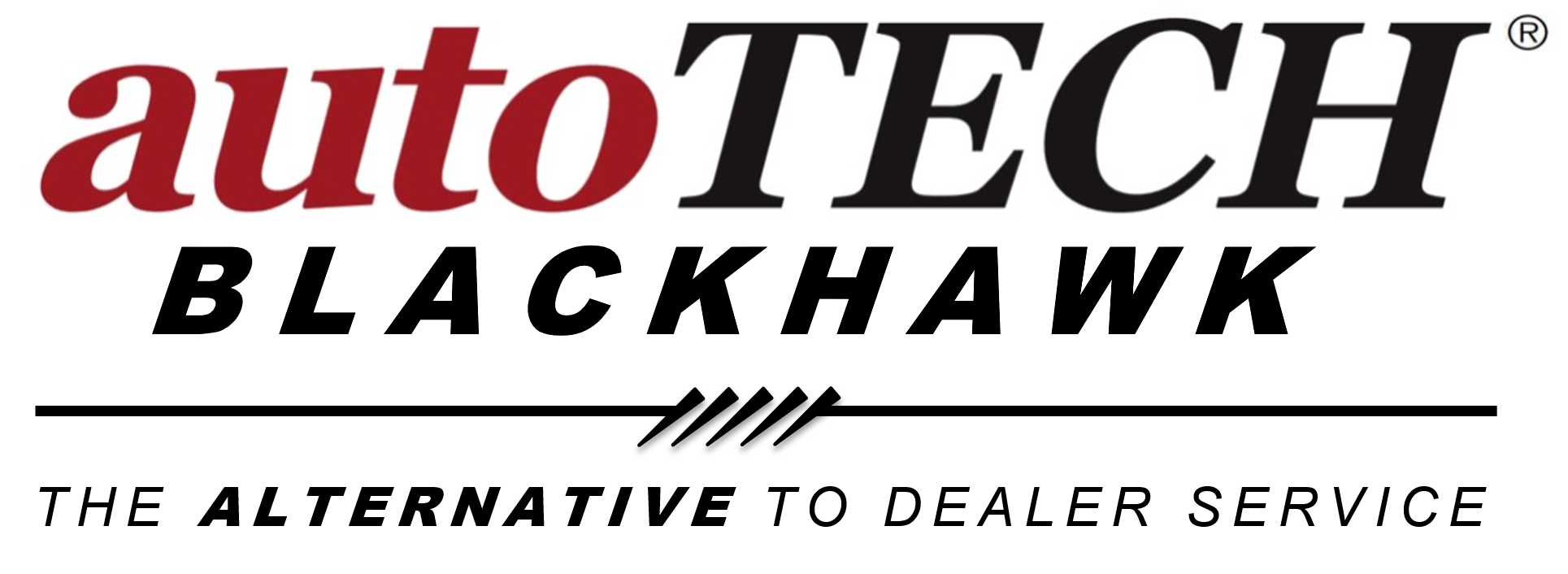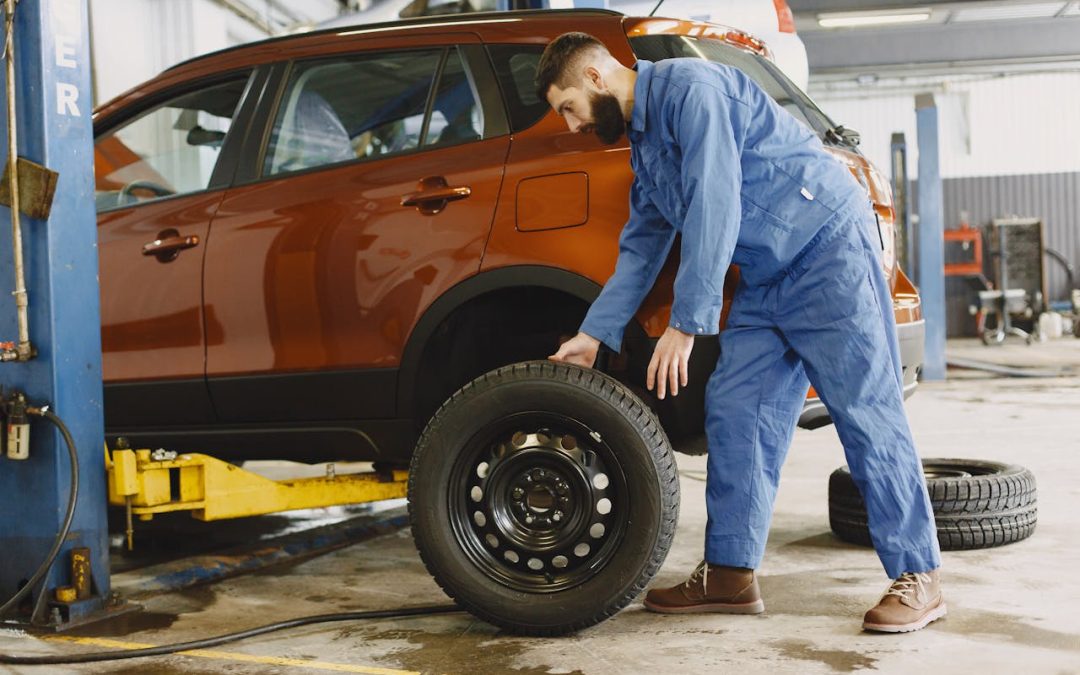To determine when to replace your brakes, look for signs such as squeaking, grinding, or a soft brake pedal. Brake pads generally require replacement every 50,000 km; however, the correct timing can vary depending on your driving style, road conditions, and the brake pad material. Most drivers will hear a scraping sound when the brakes need to be replaced. Catching them early can keep you safe and save you from bigger repair bills down the road. In this guide, find out what signs indicate worn brakes, how to inspect them, and optimal steps for maintenance. The main body will assist you in making wise decisions in brake maintenance and safety.
Key Takeaways
- Timely brake replacement is crucial for maintaining your vehicle’s safe and efficient operation. Heed warning signs like weird sounds, decreased braking efficiency, and dashboard indicators to gauge when it’s time for service.
- Don’t just check one component – brake systems usually include pads, rotors, drums, fluid, and lines, so be sure to maintain all via a combination of self-inspections and professional check-ups.
- Driving habits, load, environmental conditions, and the quality of the parts all play a large role in the wear of brakes. Softer driving and better parts will help extend brake life.
- When you postpone brake work, it can spiral into damage to the rotors and calipers — or even full system failure — which means more expensive repairs and less safety.
- By investing in proactive brake care, like having mileage-based inspections and replacing worn parts right away, you avoid expensive breakdowns and maintain your vehicle’s reliability.
- Regardless of your geographic location, taking care of your brakes is good for safety and good for your wallet, so getting routine maintenance is a smart move for every driver.
Key Brake Replacement Indicators
Brake care is essential for safety and peace of mind. When to replace your brakes boils down to monitoring some obvious signs, including sound, feel, and sight. Being aware of these signs can save you from expensive damage and protect your life.
Audible Warnings
Brake squeals are one of the best signs that you need to check your pads. This screech typically indicates that the wear indicators are rubbing the rotors. Grinding noises are more serious and indicate the pads are worn through, resulting in metal-on-metal contact. Constant screeching or growling can indicate issues with other brake components. If these noises persist whenever you brake, check your brakes immediately.
Performance Changes
An extended stopping distance is a loud red flag. If you need to press the pedal closer to the floor or harder to stop, your brake pads may be thin, or your brake fluid may be low. A soft, spongy pedal can indicate air in the brake lines or fluid leaks. Pulling to one side when braking typically indicates that the pads are wearing unevenly or a caliper is stuck. If there is any loss of the typical sharp feel of the brakes, that’s a sign you should take a closer look.
Visual Clues
In a general check, you’ll find brake pads under 6.4 mm, and this is below the safe limit. If pads are thin or you see lots of brake dust, replacement is probably required shortly. Blued or warped rotors can’t grab pads effectively, reducing braking strength. See if there are any cracks or other damage on pads or rotors—these require urgent care to prevent larger issues.
Unusual Sensations
Vibrations in the pedal while braking can indicate warped rotors. If it feels stiff or sticks, you may have an issue with the brake lines or calipers. A car pulling to one side is another hint. Any new, strange feeling when you brake cannot be dismissed.
Dashboard Alerts
Dashboard lights such as ABS or brake warning lights typically indicate there’s an issue with pads or fluid. A lot of today’s vehicles have sensors that throw warnings when pads are worn. Have any brake-related alerts checked as soon as they pop up.
What Accelerates Brake Wear?
Knowing these can assist you in maintaining your brakes, performing, and enduring. This guide explains the primary contributors to rapid brake wear for anyone looking to optimize their car’s braking system.
Driving Style
Aggressive driving, such as hard stops and fast starts, can wear out brake pads significantly faster. Easy, gradual braking in particular, in city driving where you encounter a lot of stop-and-go, can have a huge impact. Brake pads may only last 25,000 miles instead of 70,000 miles, and rotors may wear out sooner if you brake hard often. Frequent hard stops produce more heat and friction, accelerating the breakdown of both pads and rotors. By watching for warning signs like screeching noises, you can catch problems early before they cause expensive repairs or unsafe driving.
Vehicle Load
Too much weight on board places additional strain on your brakes. When you’re lugging heavy items in your car or pulling trailers, your brakes need to work overtime to stop. This leads to pads and rotors wearing out more quickly. So, it’s best to keep loads within the vehicle’s rated carrying capacity and distribute them evenly if you can. Overloading may not only wear down your brakes but also impact your car’s handling as well, making it less safe to drive. By periodically monitoring your load and verifying that it’s within your car’s limits, you’ll help your brakes last longer.
If you drive with frequent or heavy loads, work vehicles, road trips, etc., visual checks on a regular basis are vital. Brake pads must be at least ¼” thick to have good stopping power.
Environment
Driving in tough environments can accelerate brake wear. Wet and icy roads, in particular, require frequent braking, which can wear pads and rotors down faster. Cities with tons of stop-and-go, or jagged roads with potholes or loose gravel, cause brakes to work harder and wear down faster.
|
Environmental Factor |
Impact on Brake Wear |
|
Wet/Icy Roads |
Increased wear from frequent braking and moisture |
|
Urban Traffic |
More stop-and-go, faster pad wear |
|
Rough Terrain |
Higher chance of rotor damage |
|
Hilly/Mountain Roads |
More braking on descents |
Component Quality
Selecting the proper brake components counts. Trusted brands’ high-quality pads and rotors will last longer and perform better. Cheaper, low-grade parts might appear to be a bargain, but they tend to wear out quickly and can jeopardize your safety. Seasonal inspections of all brake components, such as brake fluid (which should be changed every 2–3 years), help catch problems early.
Proactive Brake Inspection
Proactive inspections assist in identifying early indications of brake pad wear, rotor damage, and fluid leaks, reducing the likelihood of accidents and expensive repairs. Once every 10,000 to 15,000 miles is the rule of thumb for brake checks, with full replacement required every 30,000 to 70,000 miles, depending on your driving habits and terrain. Tracking these inspections and understanding what to inspect for holds your vehicle braking as it ought to and helps you steer clear of the risk of extended stopping distances.
Mileage Milestones
Standard brake pad replacement at around 30,000 miles is a secure baseline for normal circumstances.
Drivers with heavy stop-and-go traffic or aggressive braking habits may require replacement soon, sometimes at the lower end of the 30,000 – 70,000 range. For lighter, mainly highway usage, pads could last longer. Always consult your vehicle’s manual, but mileage is a convenient way to time brake inspections and servicing. Tracking miles per inspection or replacement provides you with visibility into when work is necessary, so you’re not left guessing.
Self-Inspection Guide
A quality self-inspection begins by peering at the brake pads through the wheel spokes–pads less than 3 mm require immediate replacement. If you are unsure, measure thickness with a small gauge. Rotors should appear smooth, free of deep grooves or staining. Look for weird fluid stains around the wheels or under the car; this could indicate a brake fluid leak. If you hear squeaking or screeching when braking, that’s the wear indicator saying the pads are about done. Shaking or vibrations can indicate uneven pad wear or rotor problems, not something to be brushed off.
A basic brake inspection checklist includes:
- Check brake pad thickness with a gauge.
- Look for grooves or cracks on rotors.
- Inspect for brake fluid leaks or stains.
- Listen for squeaking or grinding sounds while braking.
- Note any vibration when applying the brakes.
Professional Assessment
Changes are complicated, so it’s wise to visit a brake expert for confirmation. Request a complete system checkup, not merely the pads and rotors. This should include checking the brake lines, fluid, and calipers. Great mechanics will describe findings in plain English and only recommend necessary repairs. Have these professional checkups at least annually, or more if you drive in hard conditions.
Steps For Proactive Brake Inspection
- Schedule checks every 10,000–15,000 miles.
- Track mileage after each check or service.
- Use a gauge to measure pad thickness.
- Replace brake fluid every two to three years.
The Brake Wear Cascade Effect
Brakes always come in a set, and if one part is worn, it increases the wear on the rest. This is the brake wear cascade effect. The number one culprit is ignoring brake pad maintenance. This can cause rotor damage, caliper strain, and, unchecked, full system failure. Every little problem in the system has the potential to cause bigger, more costly problems, particularly in challenging climates or under aggressive driving.
Pad Degradation
Inspect your brake pad thickness either by eye or with a mechanic’s assistance. If your pads are less than 6 mm thick or you identify uneven wear, it’s time to make a move. Squealing, pulling to one side, or a vibrating brake pedal are more than just annoyances—they’re symptoms that the pads are worn, and putting them off can ruin rotors and calipers fast.
Brake pads generally need to be replaced somewhere between 25,000 and 65,000 miles, but this depends on your driving habits and the specific car. If you drive in stop-and-go traffic, or around lots of hills or severe weather, check ’em more frequently. Pads less than a 1/4 inch (approximately 6 mm) thick need to be replaced ASAP to maintain the system’s safety and equilibrium.
Rotor Damage
Rotors wear down faster if pads are neglected. Warping, grooving, or scoring = less grip and longer stopping distances. Rotors typically endure for 30,000 to 70,000 miles, although this varies based on climate and driving habits.
Routine inspections for heat spots or grooves aid in identifying rotor issues before they become major. Swap out rotors if you encounter deep striations or if your brakes feel chattering. By maintaining rotors, you’re ensuring pads wear evenly and brakes perform smoothly.
If you delay replacing rotors, pads wear quicker, and repairs get pricier. Schedule rotor checks with every brake service as a precaution.
Caliper Strain
Worn brake pads add extra stress to calipers, particularly the pistons. Over time, this might result in calipers sticking or jamming, causing uneven braking or failure.
If you hear brakes dragging or smell burning, check your calipers immediately. Swap out any caliper that’s damaged to prevent more severe problems.
System Failure
Ignoring warning signs can lead to sudden brake loss.
Routine checks and quick repairs lower safety risks.
Small fixes now stop bigger, pricier failures later.

Beyond Just Brake Pads
Braking in a modern vehicle is more than just pads and rotors. Routine inspections and maintenance of the entire brake system—fluid, lines, rotors, and drums—maintain your vehicle’s safety on every journey.
Brake Fluid
Low brake fluid can frequently indicate leaks or worn components. Brake fluid isn’t just something you keep filling up — if you see it drop, then go in search of an issue.
Though most car manufacturers suggest flushing brake fluid biennially, heed your owner’s manual. Old or dirty brake fluid absorbs water, corrodes parts, and diminishes braking power. That’s why a fluid flush is a regular task, not only when you see a problem. This is particularly crucial if you reside in a humid region or drive through harsh environments. This is the single biggest culprit of brake system failure across the world, so don’t bypass this step.
Brake Lines
Brake lines transfer fluid from the master cylinder to each wheel. Even tiny leaks or cracks in these metal or rubber lines can make a huge drop in stopping power.
If you notice rust, wet spots, or bulges, the lines should be replaced immediately. Brake line damage can result in sudden fluid loss and total brake failure. Have a mechanic examine the lines at least annually, or every 15,000 kilometers, whichever occurs first. If you drive in areas with rough roads or rough winters, push for more frequent checks.
Rotors And Drums
Rotors and drums wear out from heat and friction just like pads. Disc brakes—standard on the front, occasionally all around—rotors. Drum brakes are typically on the rear wheels of newer cars and light trucks.
Warped or scored rotors lead to shaking and weak brakes. Drums with deep grooves or a thin surface cannot properly grip the brake shoes. Both should be inspected during routine service. Rotors tend to be resurfaced and can last up to 110,000 km. You have to replace them if they’re too thin or broken.
Professional Inspections
A complete brake check every 15,000 – 24,000 km or at least once a year is ideal. City drivers might need new pads at 48,000 kilometers, yet highway drivers can squeeze more than 128,000 from a set. Front brakes tend to wear out quicker, doing the majority of the stopping labor.
The Cost Of Delay
Delaying brake replacement is expensive and dangerous. Small brake problems, when ignored, tend to become big repairs, costing way more than expected. Stalling appears to be frugal, but it boomerangs, both on security and costs.
Financial Impact
Neglect brake work, and it’s a larger invoice down the road. Brake pads worn down to the metal can ruin rotors, turning a simple, easy job into a much more costly one. Others wait until they hear scraping, trying to get as much as they can from their dollars, but the harm caused by metal-on-metal can push repairs beyond $150, just for the rotors. The cost of replacing your brake pads when timing is right, on the other hand, can often be much less, generally less than half the price of replacing pads and rotors, especially if you catch it when there’s 2–3 mm of lining left. This, of course, saves money and hassle.
Putting good brake parts in and keeping on top of maintenance pays long-term dividends. Good brake pads don’t wear out as quickly and protect better. When you schedule brake work in advance, you sidestep emergency repairs and can budget better. That way, any surprise costs won’t derail your budget.
|
Maintenance Action |
Immediate Cost (USD) |
Delayed Cost (USD) |
|
Timely Pad Replacement |
$70–$120 |
– |
|
Pad + Rotor Replacement |
– |
$200–$350 |
|
Emergency Repair (pads/rotors) |
– |
$300+ |
Safety Risks
Worn brakes translate into longer stopping distances and less control. In a crisis, single-layer pads might not halt your vehicle quickly enough, particularly if you’re operating in mountainous or congested regions. Several drivers opt to change pads at 2–3 mm to avoid entering this danger zone. For everyone who drives in the mountains or heavy traffic, thin pads can heat up rapidly, providing even less protection right when you most need it.
The danger is not merely to you. Passengers and others on the road are endangered by inadequate braking. Even if you believe you can squeak another little while, the danger frequently exceeds the pittance saved by waiting. Brake failures may cause accidents, lawsuits, or worse.
Some drivers think there’s minimal downside to running pads past the 2–3 mm mark, so long as they don’t dog it and create metal-on-metal contact. This bet can backfire if an issue arises at an inopportune moment. If you care about dependability, fast resolution is the wiser path.
Prioritizing Timely Replacement
Brake service is both a safety and an economic issue. By getting ahead of parts wearing out, you safeguard both yourself and your wallet. Up-to-date replacements = less surprises, more peace of mind.
Conclusion
Brake replacement tips – to keep your car safe, watch your brakes. Squeaks, pulsing, or slow stops indicate that it’s time to take a closer look. Bumpy roads, heavy payloads, and hard stops take them out quickly. Not just pads, even small brake parts matter. If you wait too long, little repairs become major and more expensive. Routine inspections catch issues before they become major. Consider brakes as the core of your car’s safety. A little inspection now can spare you time and money down the road. If confused, consult a local tech you trust. Be the first to know when your brakes need replacing! Have brake questions or stories?. Send them on in and help everybody else stay sharp behind the wheel.
Frequently Asked Questions
1. How Do I Know When My Brakes Need Replacing?
Typical indicators are squeaking or grinding noises, extended stopping distances, or a warning light on your dashboard. If you hear any of these, get your brakes inspected soon.
2. What Factors Cause Brakes To Wear Out Faster?
Common causes include frequent braking, heavy loads, stop-and-go traffic, and adverse weather. Routine inspections mitigate these problems upfront.
3. How Often Should I Inspect My Brakes?
They suggest checking your brakes every 15,000–20,000 km or at least once a year. More frequent checks may be necessary if you drive in harsh conditions.
4. Are Brake Pads The Only Parts That Need Replacement?
No, rotors, calipers, and brake fluid too. Routine checks guarantee every brake system element is secure and effective.
5. What Happens If I Delay Replacing Worn Brakes?
Waiting too long to replace your brakes can result in increased stopping distances, expensive repairs, and safety hazards. Fixing it early stops this as well.
6. Can I Drive With A Brake Warning Light On?
It’s not safe to drive with a brake warning light on. That’s indicative of a potential major issue. Have them checked right away by a professional.
7. Is It Expensive To Replace Brakes?
Costs vary by your vehicle and parts. Putting it off can cost you big repairs. Routine care can prevent huge expenses.
Need Brake Repairs You Can Truly Rely On?
When it comes to your safety, don’t settle for average. At autoTECH Blackhawk, we specialize in high-performance, precision brake repair backed by experience and trust. What sets us apart? We’re not just about fixing cars — we’re about building real relationships with our clients and keeping your vehicle running safely for the long haul.
From squeaky brakes and soft pedals to full rotor and pad replacements, our expert team handles it all with care and precision. You’ll get peace of mind with our industry-leading 3-year/36,000-mile warranty, plus the confidence of knowing we only use top-quality, manufacturer-recommended parts.
Your brakes keep you safe — let’s make sure they’re ready for anything.
Call our friendly team today to book your contactless brake repair consultation. Let’s get you back on the road, worry-free.


